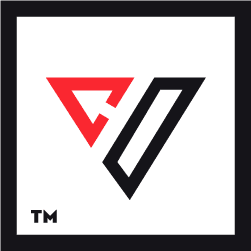What is a brand awareness campaign, and why is it essential? A sports brand awareness campaign is vital when crafting and using sports-related content to promote your product or brand. It’s a popular form of marketing that leverages the immense star power of sports to increase your fanbase and drive sales.
While paid advertising, such as super bowl ads and athlete endorsements, are well-known examples of a brand awareness campaign in action, it includes authentic, SEO-focused, written content on your website and in relevant publications that builds brand authority around healthy or aspirationally athletic lifestyles. This campaign-style can also appeal to many non-athletes, as health-conscious consumers are intrigued by the latest industry trends.
Let’s dive into how to expand awareness of athlete brands by understanding top brand awareness campaign strategies, developing robust paid advertising strategies, and using social media to connect globally.
Understand the Basics of a Stellar Brand Awareness Campaign
Once again, a brand awareness campaign is a marketing campaign that often consists of online advertising, content marketing, referral programs, influencer marketing, guest posting, guest blogging, an affiliate program, paid ads, free content, and more. It’s designed to familiarize consumers with a new product or service or an existing one that is not considered well-known amongst its target audience.
Brand awareness campaigns aim to communicate the values that differentiate the brand, product, or service from the competition—the brand’s why. It differs from a traditional marketing campaign because success isn’t judged on an immediate return on investment (ROI). The primary goal is to increase public knowledge about the brand.
A multi-pronged brand awareness campaign involves marketing efforts across multiple channels instead of just one advert in a magazine or online.
Targeting a Specific Audience
The first step in building brand awareness is understanding your audience—the consumers, the fans interested in you, your vision, creative design, brand identity, and values. They are the individuals with a problem that needs solving, and your product or service is the answer. Consumer relationships are essential to lead generation and building brand awareness. You need to understand who they are, their demographics, what matters to them, where they spend their time online, how to best communicate with them and speak their language, what kind of tone to use, and how you need to illustrate your brand—its personality.
This profile is known as your buyer persona—a description of an actual “fake” individual representing most of your target audience. Again, this persona is fictional but based on extensive research and a deep understanding of your audience and consumer. Once you understand your target customers, you can focus your marketing strategy and brand awareness efforts on brand recognition, honing your brand message, and developing quality relationships that result in paying customers.
Creating Authentic, SEO-Focused Written Content
Authentic, SEO-driven (search engine optimized) content is the next essential component of your brand awareness campaign. SEO content is designed to rank on a specific search engine results page, such as Google. You might think that all content is SEO and will naturally build brand awareness, but that’s not the case. Google and other search engines are scanning your content for specific search terms. Your website and social media posts can only garner so much organic traffic, no matter your brand. SEO helps ensure your brand awareness efforts are not wasted, and your website is recommended to individuals searching for particular words, such as products or services.SEO is necessary when growing brand awareness. It encourages you to do market research, carefully consider your marketing strategies, enhance your brand messaging to meet the needs of your existing customer base, and establish your brand voice with your target market. Brand recognition is key to increasing brand awareness with your target audience, brand equity, and your return on investment (ROI). Over time, your loyal target audience will also contribute to your brand-building efforts through word-of-mouth marketing. This will help you reach new audiences and expand your reach on social media platforms.
The Right Medium, the Right Market, & the Right Timing
To become one of the great industry giants with your brand awareness campaign, you need to focus on your target audiences. Ask yourself where your target audience spends most of their time, and understand your current customer relationships, native advertising tendencies, and unique product offerings. Finally, correctly identify a baseline on which to measure brand awareness. Your primary goal in communicating with your target customers is to develop positive associations with your brand. This helps build brand equity, boost brand awareness, and support a particular product or service.
To develop the right timing for your brand awareness campaign, you must understand your customer journey. Brand awareness strategy takes into consideration every interaction from start to finish. This may include a new lead reading a blog post, coming across a form of paid media, seeing your content through native advertising, or being exposed to a complementary brand or multiple small businesses that leads to your new brand website or social media profile. Many brands rely solely on native advertising, but the key to becoming a household name is to diversify your efforts across other channels.
Paid Advertising Strategies & Partnerships
Another effective method when developing brand awareness campaigns and increasing brand awareness is developing robust paid advertising strategies and partnerships. Partnerships allow brands to broaden their brand awareness campaign aims and enhance consumer awareness in previously untapped markets. This is a good brand awareness strategy as partnerships with complementary brands make sense to consumers and can result in some unique media, guest blogging opportunities, a possible referral program, new product offerings, and more.
A common technique for many brand awareness campaigns when seeking to raise brand awareness is to raise awareness for the why—why the partnership, product offering, service, or brand makes sense, and how the consumer can benefit. A guest blog is a great example of a piece of media either brand can create to support the other, generate even more brand awareness, and further the brand awareness campaigns shelf life.
Paid advertising strategies are an essential component of brand awareness marketing as it enhances brand recognition as the target audience is consistently exposed to the brand.
Co-Branded Partnerships
As mentioned previously, partnerships are an excellent way to enhance your brand awareness strategy and brand recognition. Partnerships increase brand awareness as both brands post content about the other, reach previously untapped audiences, and have the potential to develop a unique product or service offering. This is known as a co-branded partnership—when two or more companies jointly promote their brands, services, and products through cross-marketing efforts and creating brand awareness.
The most successful co-branded partnerships create immense value for all partners involved, build brand awareness for the sports brands, and become a pop culture icon. They develop successful sports branding campaigns that continue to change the face of sports marketing. The best brand awareness strategy can achieve great results by leveraging each partner’s strengths and assets.
Securing Sponsorships
Your brand will naturally attract sponsors by focusing efforts to increase brand awareness. Like partnerships, sponsors are interested in brands that will build brand awareness, increase their internal sales for a particular product or service and generate significant value for their brand. An example of a company that offers sponsorships is The Coca-Cola Company. Their brand has sponsored many significant events, such as American Idol, Apple iTunes, BET Network, NASCAR, NBA, NCAA, and even the Olympic Games.
Using Social Media to Connect Globally
The final component to building brand awareness is to use social media platforms to connect globally. Brands today rely on a robust online presence to generate an audience and sales. Social media is essential to engage with the masses and an excellent way to showcase your brand, build brand awareness, and build a community. Remember, to expand awareness of athlete brands, you must understand top brand awareness campaign strategies, develop robust paid advertising strategies, and use social media to connect globally.







